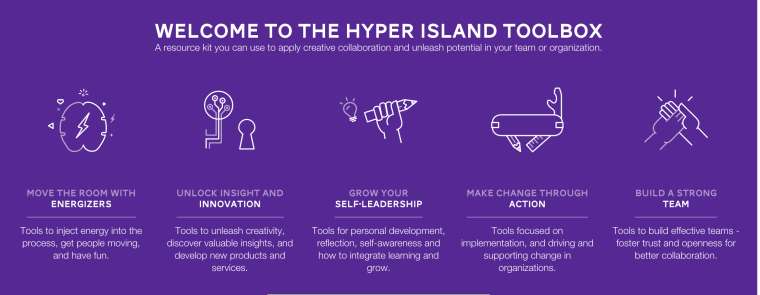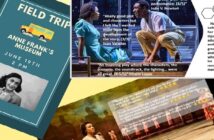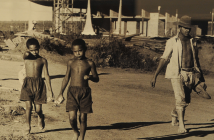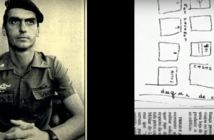HI Toolbox
Hyper Island is a creative business school which also offers consulting services. Since 1996, Hyper Island has been helping individuals and organizations seize their potential, develop and be leaders in a world of constant change.
Hyper Island has always used a unique approach to learning that focuses on collaboration, creativity, and learning-by-doing. We’ve seen over and over again, that this approach builds competence and confidence, helps teams grow, and leads to better outcomes.
This is a Toolbox for the Hyper Island approach. It’s a collection of methods and ideas for anyone who wants to apply it in their own work.
Guidelines
To apply the methods in the Toolbox there are some important concepts and guidelines that you should feel comfortable with. Read on to learn more.
LEARNING-BY-DOING
Learning-by-doing (or Experiential Learning) is the process of learning new skills, knowledge, behaviours and attitudes through active reflection on direct experienced. It is a widely used learning approach that centres around a four-step process: first, a concrete experience; second, reflection on that experience; third, drawing conclusions and insights; and finally, applying new learning.
Hyper Island’s methodology is built on a learning-by-doing approach. The tools in the Toolbox emphasize experimentation, participation and action and designed to be applied with a learning-by-doing approach.
Reflection
Reflection (or Reflective Practice) is the practice of actively reflecting on one’s experiences in order to continuously learn and develop. Reflection is a natural human activity, of course. But by making reflection more intentional and regular, people learn more and develop more quickly. Practicing reflection in teams and organizations helps people learn collectively.
The key to reflection is asking: “What does this experience mean to me?” Here’s a simple yet powerful set of reflection questions that can be used in almost any setting for individuals and/or groups.
- What happened?
- How did I feel and what were my reactions?
- What insights or conclusions can I draw from the experience?
- What actions can I take based on what I learned?
Use reflection as a way to support people to harvest the most possible learning from their individual and shared experiences.
Designing a workshop
A workshop is a group process that has a specific purpose, involves participatory activities, and results in specific outcomes. The tools in the Toolbox are designed to be used individually or in combinations within workshops.
When planning a workshop, there are a number of important things to think about and prepare. The IDOART model, is a simple tool to use when starting to plan a workshop. It walks through the Intention of the workshop, the Desired Outcomes, the Agenda, the Roles and ground Rules, and finally the Timings. Working through each step of this model in detail will generate a solid foundation for any workshop.
Great workshops have a balance of structure (the plan set by the person leading) and chaos (the unpredictable creativity of people engaging together). When planning a workshop, make a clear and detailed plan, that both provides structure and leaves space for creativity to emerge through participation.



